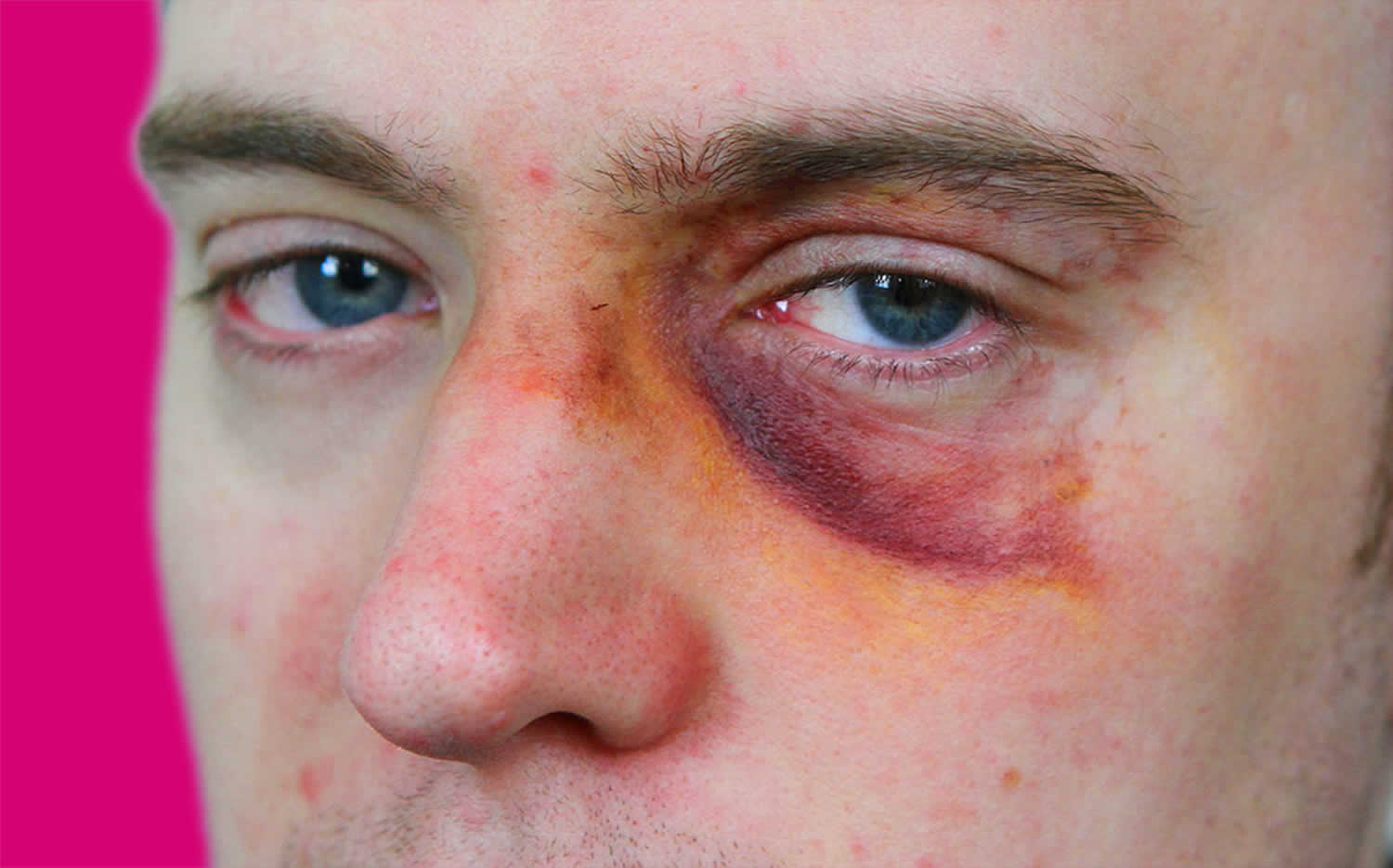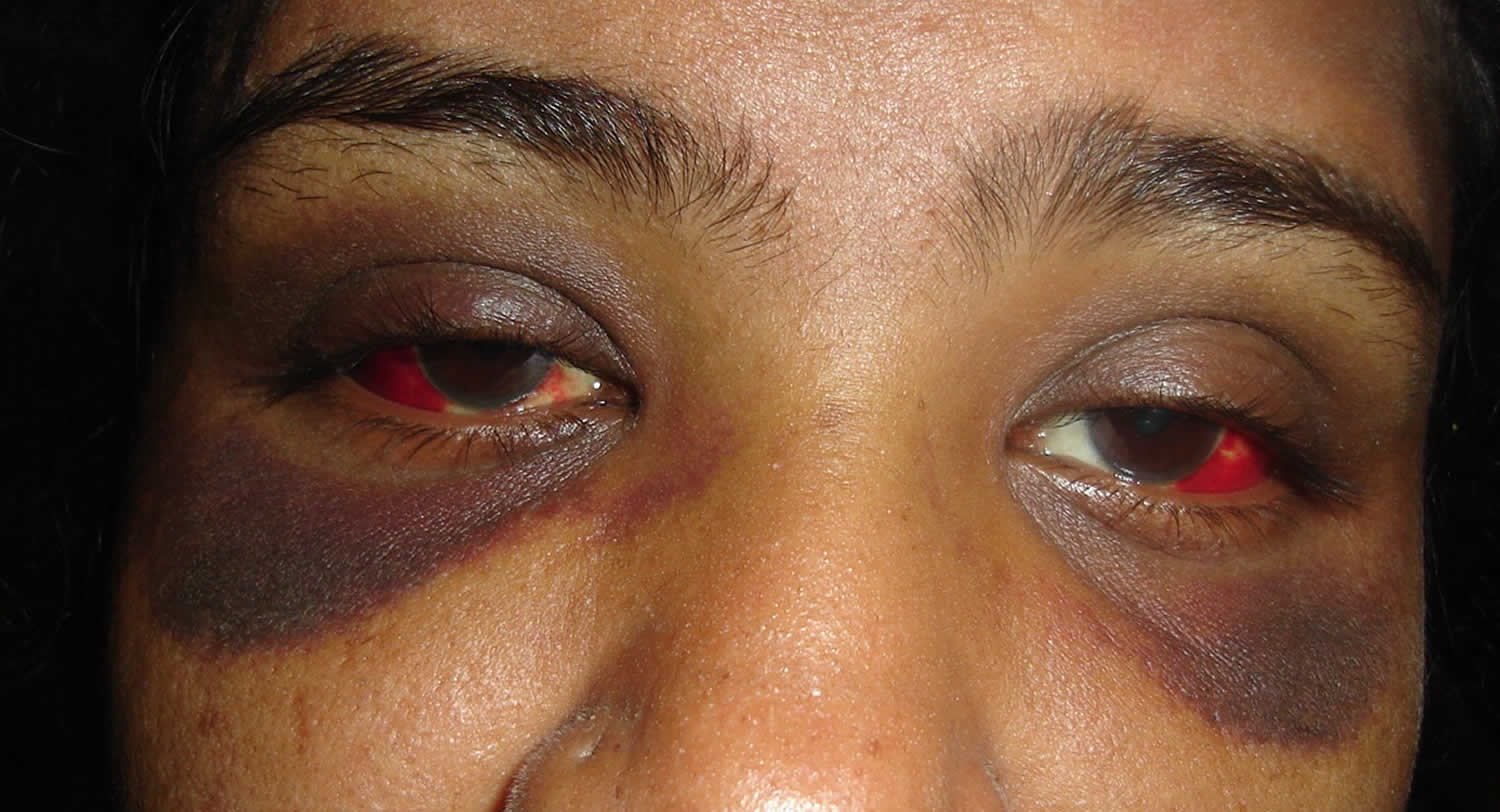What is black eye
Black eye is a phrase used to describe bleeding under the skin around the eye due to an injury to the face or the head. Blood and other fluids collect in the space around the eye, causing swelling and dark bruising in the tissue. The medical term for this type of bruising is ecchymosis. When there is trauma or injury to the face, the skin around the eye — which is very loose — is one of the first places to swell as fluid builds up. Although the name “black eye” would indicate otherwise, the eye itself is usually not injured. Many black eyes heal on their own in a few days.
- Seek medical care immediately if you have vision problems, severe pain, or bleeding in your eye or from your nose.
- See your doctor urgently if you have a black eye and:
- you’re taking blood-thinning medication (such as warfarin)
- you have a bleeding disorder (such as hemophilia)
- If the black eye injury happened during one of your routine activities, such as a sport, follow up by investing in protective goggles or unbreakable glasses are vitally important.
Call your doctor immediately if you see any of these problems:
- increased redness
- drainage from the eye
- lasting eye pain
- any changes in vision
- any visible abnormality of the eyeball
- visible bleeding on the white part (sclera) of the eye, especially near the cornea
- there’s blood visible in your eye
- you have an irregularly shaped pupil (the black dot at the centre of the eye)
- you had a blow to the head and have bruising around both eyes
- you have problems with your vision, such as double vision, loss of vision, seeing flashing light, halos or shadows, or pain when looking at a bright light
- you can’t move your eye
- you have severe pain or swelling
- you have a headache that doesn’t go away, or blurry vision
- the area around your eye is warm or leaking pus
- your temperature is very high, or you feel hot and shivery
- black eye doesn’t go away within 3 weeks
Most injuries that cause a black eye aren’t serious. But a black eye may indicate a more serious injury, such as an internal injury to the eye such as a hyphema (bleeding in the eye) or a fracture of the thin bones around the eye. For instance, if there is bleeding within the eye that is called a hyphema and should be looked for any time you see a black eye. It can affect your cornea and your vision. In some cases of face or eye trauma, increased pressure inside the eyeball (called ocular hypertension) can occur, resulting in damage to the eye and eyesight if not treated. You may have a skull fracture if you have double vision, bruising around both eyes (raccoon eyes) or bleeding from the nose.
Figure 1. Hyphema
Figure 2. Raccoon eyes
Black eye symptoms
After an injury to the eye, it is important to distinguish between symptoms of black eye and those that might indicate a more serious head injury.
Black eye symptoms may include:
- pain around the eye
- swelling around the eye, which can be mild at first, then increasing later. Swelling may make it difficult to open the eye
- discoloration (like a bruise) around the eye. The skin around the eye may be red at first, then grows darker, progressing to purple, yellow, green or black
- blurred vision
Signs of a more serious head injury require medical attention, and may include the following:
- double vision
- vision loss
- blood on the eyeball surface
- inability to move the eye
- severe or ongoing headache
- fainting/loss of consciousness
- blood or fluid coming from the ears or nose
Black eye causes
A black eye is most commonly caused by something hitting the eye or nose. Either one or both eyes may be blackened depending on where you get hit. If you suffer a blow to the nose, both eyes may swell; the swelling is due to the buildup of fluid in the loose skin beneath the eyes. Other types of trauma to the head can cause black eyes, including skull fractures.
Facial surgery can also cause black and swollen eyes, including facelifts, nose surgery or surgery on the jaw. Other conditions, such as allergies and infections, can lead to swelling around the eye, but not the bruising discoloration of a black eye.
Black eye diagnosis
In general, your doctor can simply do a physical exam to diagnose a black eye. He or she will check your vision and test the motion of your eye by moving his or her finger in front of your face and asking you to follow the movement with your eyes. Your doctor will shine a light into your eyes to assess if your pupil is dilating normally and to look at the inside of your eye for any problems.
Your doctor will also examine the bones in your face and around your eye. If he or she suspects you may have fractured any bones or that there might be something inside the eye, you may have an X-ray or CT scan.
Black eye treatment
How to heal a black eye:
- Apply a cold compress soon after the injury. To reduce swelling and ease pain the first day, an ice pack can be applied to the eye for 15-20 minutes at a time, once every hour. Using gentle pressure, place a cold pack or a cloth filled with ice (to avoid freezing the skin) to the area around your eye. Take care not to press on the eye itself. Apply cold as soon as possible after the injury to reduce swelling. Repeat several times a day for a day or two.
- Look for blood. If you see it in the white or colored parts of the eye, seek urgent care by an eye specialist (ophthalmologist).
- Seek medical care immediately if you have vision problems (double vision, blurring), severe pain, bruising around both eyes, or bleeding in an eye or from the nose.
- Apply warm-hot compresses 2 days later. This may be helpful after a few days (48 hours) when the swelling has stabilized. This will help the body reabsorb the leakage of blood and may help reduce discoloration. Repeat several times a day for a day or two.
- Prop your or your child’s head with an extra pillow at night, and encourage him or her to sleep on the uninjured side of the face (pressure can increase swelling).
- Take painkillers such as paracetamol (acetaminophen) or ibuprofen for any pain
Despite what you see in movies or on television, you should never put a raw steak or other raw meat on a black eye. The bacteria on raw meat poses a high risk of infection, and this method of treating a black eye has no scientific basis.
Finally, be sure to keep the affected eye(s) well-protected from further injury. Avoid sports or other similar activities where the eye can be hit until the eye has healed.
If pain or swelling from a black eye do not improve after a few days, or if you are experiencing vision changes or problems, call your ophthalmologist (eye specialist).







